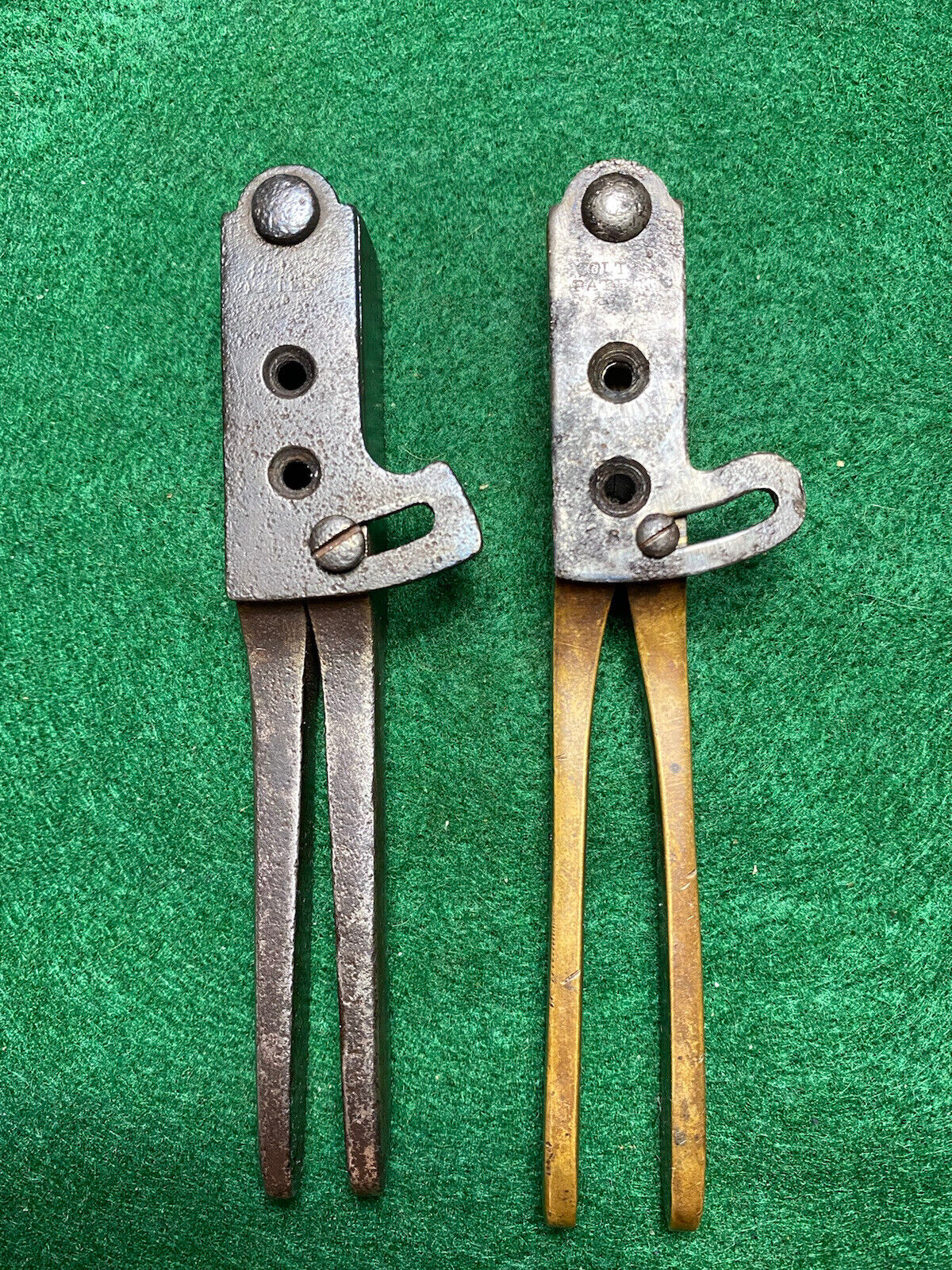
Civil War Brass .34 Caliber Bullet Mold. Experimental Colt London Mold. GALLERY For Sale

When you click on links to various merchants on this site and make a purchase, this can result in this site earning a commission. Affiliate programs and affiliations include, but are not limited to, the eBay Partner Network.
Civil War Brass .34 Caliber Bullet Mold. Experimental Colt London Mold. GALLERY:
$10000.00
This is to my knowledge a population 1 of 1 brass Colts patent bullet mold for the .34 caliber Navy, or an experimental mold originating from the London Colt factory in 1855 where Colt was submitting tinfoil cartridges in trial with the English Defense Department. Colt documentation exists (see picture references from The Gun Report) showing a unique tinfoil bullet very similar to this, and in correspondence discussed submitting tinfoil cartridges in Navy and “SMALL” sizes. Based on the English origin of this mold and picture of a tinfoil cartridge with this bullet (not seen anywhere else), I believe this mold has been identified.
I invite any response or corrections. I’ve found no opportunities to publish it nor display it & my research so I thought I’d showcase it here.
In keeping with policies this item is being listed with intent to sell but until then I’m also providing here for a point of research & reference as I have found no other information on it aside from what I’m presenting. Enjoy my research and I hope you find it interesting. If anyone found a bullet in the wild please send me any info RE recovery.
Oh, and please browse my other items including high end pieces from the George Moller collection. Thank you for supporting my small veteran owned business!
—————-
(my research/etc below unless otherwise noted)
Mold in question is shown to the right of a later model iron Colt Navy. Will update picture compared to a 2nd model Navy M22 as soon as able.
Mold specs: 5.85 ounces. 0.650 inches wide. 4.95 inches long.
Material: brass mold with iron sprue cutter.
Manufacture: Colt London, 1853-1856
Internal hinge pin: LEFT side (London telltale)
Legs: not bowed, but noticeably splayed.
Sprue cutter: Rounded cutter indicates early/first model Navy era. Possible ‘S’ inspection mark at bottom left. ‘Colts Patent’ stamp (likely no apostrophe but hard to tell). The sprue cutter screw is noticeably smaller than that of the .31 caliber Pocket, with a smaller diameter screw.
Mold body: Surprisingly unmarked and very good condition throughout. Someone very long ago handled it while very hot and ungloved; clear fingerprints are showing on body of mold under the patina (ouch!)
Mold cavities: Very likely factory original cavities. Given the unusual conical dimensions, the mold cavities are likely original to this mold (IE not one of the Rapley-referenced post war Colt factory conversions). The round ball cavity is very well made; note the slightly raised top portion which when cut by the sprue produces a much more spherical example than that produced by the Navy example. Also note the round ball produced by the .31 Pocket example is less exact as the top raised portion is 3X above the ball which could decrease accuracy by being off balance.
Visually it’s most similar to #M22 in the Colt Accoutrements 1834 book (R. Rapley). This mold or caliber is not mentioned in either of his 2 Colt accoutrements books nor The Book of Colt Firearms (Wilson). But not a match to any regular Colt molds.
I found a few references to the small number of .34 Navy revolvers produced but no picture references. Would love to compare pictures to a cased .34 caliber Colt Navy accoutrements, if existing.
Bullet specs (measured 2):
Conical 1
.414” long
.351 caliber
85.6 grains
Ball 1
.376 caliber
80 grains
Conical 2
.408” long
.352 caliber
85.6 grains
Ball 2
.375 caliber
79.8 grains
Compared to:
.31 Pocket
.315 caliber conical (average around heel)
Conical: 81.4 grains
Ball: 53.8 grains
.36 Navy
.365 caliber conical (average around heel)
Conical: 137.8 grains
Ball: 84.8 grains
Reference ‘The Gun Report’; February 1993 (page 17)

![]()
Titles of Distinction
- Hero of the Soviet Union
- Hero of Socialist Labor
- Pilot-Cosmonaut of USSR
- Dist. Military Pilot USSR
- Dist. Military Navigator USSR
- Dist. Test Pilot USSR
- Dist. Test Navigator USSR
- Distinguished Pilot USSR
- Dist. Navigator USSR
Orders of Distinction
- Order of Lenin
- Order of October Revolution
- Order of the Red Banner
- Order of Suvorov
- Order of Ushakov
- Order of Kutuzov
- Order of Nakhimov
- Order of Bogdan Khmelnitsky
- Order of Alexander Nevsky
- Order of the Patriotic War
- Order of Red Banner of Labor
- Order of Friendship
- Order of the Red Star
- Order Service to Motherland
- Order of the Badge of Honor
- Order of Honor
- Order of Personal Courage
- Order of Glory
- Order of Labor Glory
- Order of Mother Heroine
- Order of Maternal Glory